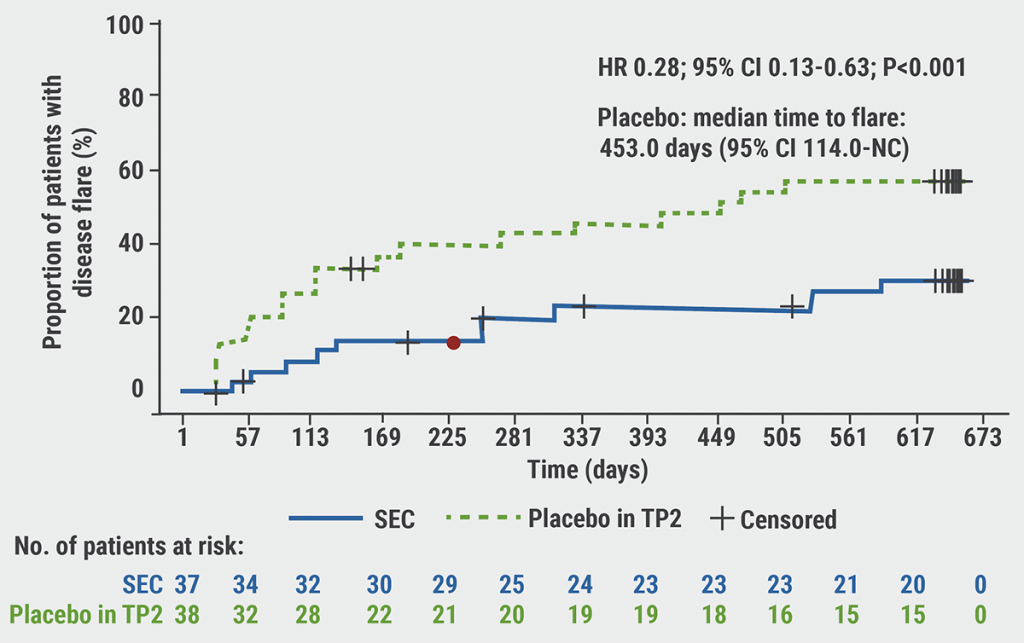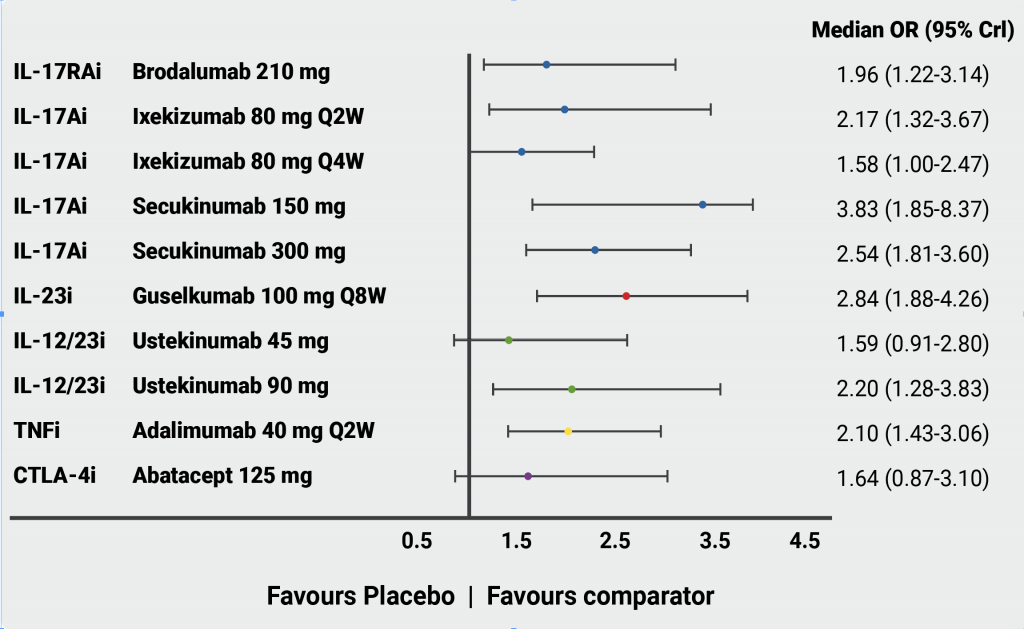https://doi.org/10.55788/3ac3f306
A meta-analysis of randomised clinical trials showed that reduction of weight using lifestyle interventions (diet and exercise regimens) led to improvement in Psoriasis Area and Severity Index (PASI -2.59; 95% CI -4.09 to -1.09; P<0.001) and proportions of patients who achieved ≥75% improvement in PASI (risk ratio 1.47; 95% CI 1.27–1.69). Furthermore, the risk of developing psoriatic arthritis is associated with increasing BMI [3]. A further cohort study assessed this risk using data from the UK Clinical Practice Research Datalink including 90,189 incident cases of psoriasis and 1,409 cases with subsequent psoriatic arthritis diagnosis [4]. This analysis showed that people with psoriasis and a BMI of 25–29.9, 30–34.9, and ≥35 have increased odds of developing psoriatic arthritis compared with people with a BMI of <25 (OR 1.79; 95% CI 1.46–2.19; 2.10; 95% CI 1.67–2.63; and 2.68; 95% CI 2.09–3.43; P<0.001 for all comparisons). Furthermore, this cohort analysis also showed that BMI reduction over time was associated with reducing the risk of developing psoriatic arthritis.
What can be done for patients with psoriatic disease and comorbid obesity? Prof. Mease considers that GLP-1 receptor agonists could be a solution [2]. “I think it’s a ripe field for looking at the potential of GLP-1 receptor agonist along with one of our traditional immunomodulatory medications compared with the immunomodulatory medication alone and seeing whether there is a difference. Either an additive or a synergistic effect, which would then lead to dual therapy.”
Fibromyalgia can also be a comorbidity of psoriatic arthritis and can lead to adverse outcomes. A small cohort study compared patients with psoriatic arthritis with/without fibromyalgia [5]. Compared with patients with psoriatic arthritis alone, patients with concomitant fibromyalgia presented with approximately twice higher scores related to disease activity (P<0.01), although PASI scores and swollen joint counts were similar. Interestingly, the proportions of patients with minimal disease activity were higher in patients without fibromyalgia (43.3% vs 0%; P=0.003). These results were confirmed in a larger study with 4,250 patients with psoriatic arthritis [6]. This study further found that fibromyalgia and chronic widespread pain are associated with female sex, worse physical function, obesity, number of comorbidities, axial psoriatic arthritis, and depression/anxiety.
To manage pain in rheumatic disease, Prof. Mease recommends non-pharmacologic interventions such as psychotherapy, cognitive behavioural therapy, conditioning exercises, physiotherapy, and patient education, as well as pharmacologic interventions such as immunomodulatory drugs and non-narcotic/neuromodulatory drugs like antidepressants, anticonvulsants (gabapentin, pregabalin), and analgesics (paracetamol), while narcotics should be avoided altogether [2].
- Gupta S, et al. Rheumatol Int. 2021;41(2):275-284.
- Mease P. Individualizing therapies for psoriatic disease: consideration of comorbidities. IFPA Conference 2024, 27–29 June, Stockholm, Sweden.
- Mahil SK, et al. Br J Dermatol. 2019;181(5):946-953.
- Green A, et al. Br J Dermatol. 2020;182(3):714-720.
- Brikman S, et al. J Rheumatol. 2016;43(9):1749-54.
- Mease PJ. Abstract 1218, ACR Convergence 2022, 10–14 November, Philadelphia, USA.
Copyright ©2024 Medicom Medical Publishers
Posted on
Previous Article
« Multiple novel oral agents show promise in psoriasis Next Article
The unfavourable role of obesity in psoriatic disease »
« Multiple novel oral agents show promise in psoriasis Next Article
The unfavourable role of obesity in psoriatic disease »
Table of Contents: IFPA 2024
Featured articles
Multiple novel oral agents show promise in psoriasis
Advances in psoriasis treatment: topical therapies show promising results
Personalised Medicine and Genetics in Psoriatic Disease
How close are we to personalised medicine in psoriatic arthritis?
Genetic and immunological advances in risk assessment and treatment of psoriatic diseases
Using advances in the genetics of psoriatic disease to better predict treatment response
Comorbidities and Complications in Psoriatic Disease
Depression complicates the management of psoriatic disease
The unfavourable role of obesity in psoriatic disease
Managing obesity and fibromyalgia in psoriatic disease
Advances in Psoriasis Treatment
Multiple novel oral agents show promise in psoriasis
Biologics for psoriasis: towards oral therapies and less frequent dosing
Advances in psoriasis treatment: topical therapies show promising results
Special Populations and Psoriatic Disease
Improving outcomes in pregnancy and psoriatic disease
Towards prevention of psoriatic arthritis in patients with psoriasis
Diagnostic Challenges and Disease Management
Itch and pain are major components of psoriatic disease and require management
Can diet help with the management of psoriasis?
Biologics in psoriatic arthritis: where we are and where we are headed
Related Articles

November 22, 2021
ACR 2021 Highlights Podcast


July 21, 2022
How to treat enthesitis in 2022
© 2024 Medicom Medical Publishers. All rights reserved. Terms and Conditions | Privacy Policy
HEAD OFFICE
Laarderhoogtweg 25
1101 EB Amsterdam
The Netherlands
T: +31 85 4012 560
E: publishers@medicom-publishers.com

